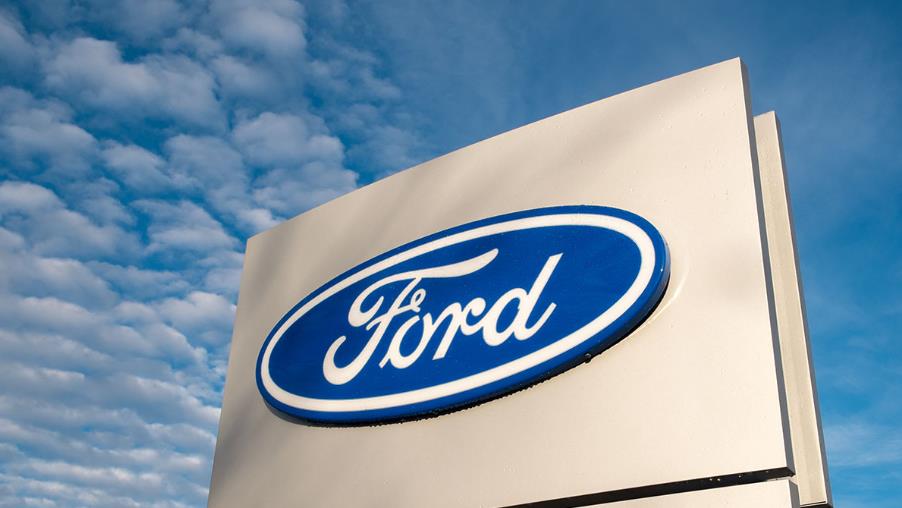
Recently, the global automotive industry has undergone significant adjustments. As industry leaders, Ford and Honda have successively taken strategic measures to reduce the scale of investment in electric vehicles, reflecting the deep challenges faced by the development of the new energy vehicle market and the major shift in the direction of industry development.
Ford Motor is systematically shrinking its strategic layout in the field of electric vehicles. According to industry insiders, Ford has made a decision to allow its competitor Nissan to use part of the production capacity of its flagship battery plant in the United States. Looking back on history, in 2021, Ford entered the electric vehicle market with a very expansionary attitude, announcing that it would spend $7 billion to form a joint venture with South Korea's SK On to build two advanced battery factories in Kentucky, trying to build a strong battery supply system to support its electrification transformation. However, the current operating status of the two factories is in sharp contrast to the original plan: one of the factories has been idle for a long time, and the other has remained in operation, but the capacity utilization rate is obviously insufficient, and only part of the capacity serves Ford's own battery needs. The opening of production capacity to Nissan this time is undoubtedly an important sign of Ford's strategic contraction in the field of electric vehicles. The reason is that Ford's optimistic forecast of the demand for electric vehicles in the early stage is in sharp contradiction with the actual weak market growth. The high production costs further squeeze the profit margin, and the additional expenses related to the tariff policy make it face billions of dollars in potential profit losses. Multiple pressures have forced this century-old automaker to re-examine and adjust its electrification strategy.
Honda Motor also made major strategic adjustments under market pressure. According to reports from Nikkei and Reuters, Honda announced a significant reduction in its 2026 electric vehicle production target by as much as one-third. This decision makes it another industry giant to adjust its strategy due to the slowdown in the electric vehicle market. According to Honda's latest plan, the 2026 electric vehicle production target will be reduced from the original 1.5 million to 1 million, which clearly shows the shift in the company's strategic focus - increasing investment and production of plug-in hybrid (PHV) models to adapt to the dynamic changes in market demand. Honda's global production plan communicated to parts suppliers shows that the total production is expected to be close to 10.2 million vehicles in 2025, and it is planned to increase to about 10.7 million vehicles in 2026. Among them, although the production of electric vehicles is increasing year by year, the growth rate is significantly lower than the initial expectation. It is worth noting that Honda had actively planned in May this year to achieve a global electric vehicle sales target of 1.5 million vehicles in 2026. The rapid adjustment of the production plan this time deeply reflects that the market environment has changed faster than the company expected. Honda also admitted that the previous goals were more benchmarks set for stakeholders and needed to be revised in light of the actual situation.
In fact, the strategic adjustments of Ford and Honda are not isolated cases. Affected by the lower-than-expected growth in demand for electric vehicles, many automakers around the world are recalibrating their electrification development paths. General Motors of the United States postponed the production plan of large electric vehicles at its Michigan plant for two years; Ford withdrew from the large electric SUV R&D project; and Volvo Cars of Sweden gave up the goal of full electrification in 2030 and chose to retain the production of hybrid models. These measures together outline the complex situation faced by the automotive industry in the process of electrification transformation.
At present, the global automotive industry is in a critical period of electrification transformation. The interweaving of multiple factors such as market demand fluctuations, accelerated technological iteration, high cost pressure and changes in the policy environment have forced automakers to maintain a high degree of flexibility in their development strategies. The strategic adjustments of industry giants such as Ford and Honda are not only a response to short-term market pressure, but also a re-evaluation of medium- and long-term industry development trends. In the future, major automakers will continue to seek a new balance between electrification, intelligence and traditional power technologies to explore the best path that suits their own development and achieve sustainable development in a changing market environment.

U.S. Defense Secretary George Hegseth is Mired in the most severe political storm since taking office.
U.S. Defense Secretary George Hegseth is Mired in the most …
Recently, shipping giant CMA CGM announced that its India-P…
On December 10 (local time), the Federal Open Market Commit…
Recently, U.S. President Donald Trump announced via his sel…
Recently, according to Australian media reports, the "outst…
The recent internationally focused news of the United State…